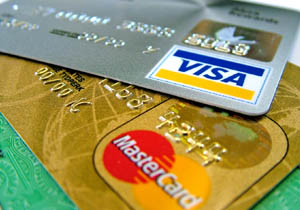Debt can be overwhelming and stressful, especially when it comes to credit card debt. The high interest rates and fees associated with credit cards can make it difficult to keep up with payments, leading to a cycle of debt that can feel impossible to escape. If you’re struggling with credit card debt, you’re not alone. According to a study by the Federal Reserve, American consumers owe over $1 trillion in credit card debt. However, there are ways to find relief and take control of your finances. In this article, we’ll explore different options for debt relief specifically for credit card debt.
Understanding Debt Relief for Credit Card Debt

What is Debt Relief for Credit Card Debt?
Debt relief for credit card debt refers to any method or program that helps individuals or businesses reduce or eliminate their outstanding credit card debt. This can include negotiating with creditors for lower interest rates or balances, consolidating multiple credit card debts into one manageable payment, or even filing for bankruptcy. The goal of debt relief is to help individuals and businesses get back on track financially and become debt-free.
Types of Debt Relief for Credit Card Debt
-
Negotiating with Creditors: One common way to get debt relief for credit card debt is to negotiate with your creditors directly. This involves contacting them and explaining your financial situation, and asking for a lower interest rate or a reduced balance. Many creditors are willing to work with individuals who are facing financial hardship and may be open to negotiating more favorable terms.
-
Debt Consolidation: Another option for credit card debt relief is to consolidate all of your credit card debts into one loan or payment. This can make it easier to manage your debts and potentially lower your overall interest rate. You can do this through a personal loan, balance transfer credit card, or a debt consolidation program offered by a reputable company.
-
Credit Counseling: Credit counseling is a type of debt relief that involves working with a counselor to create a budget and repayment plan. They can also negotiate with creditors on your behalf and help you stay on track with payments.
-
Debt Management Plans (DMPs): A DMP is a program offered by credit counseling agencies that combines all of your credit card debts into one payment, which is then distributed to your creditors. This can help you pay off your debts within a specific timeframe and potentially lower your interest rates.
-
Bankruptcy: In some cases, filing for bankruptcy may be the best option for getting debt relief for credit card debt. However, this should only be considered as a last resort as it can have long-lasting impacts on your credit score and financial future.
How to Choose the Right Debt Relief Option

When it comes to choosing the right debt relief option for your credit card debt, it’s important to carefully consider your individual financial situation and goals. Here are some factors to keep in mind:
Your Total Debt Amount
The amount of debt you owe will play a significant role in determining the best course of action for debt relief. For smaller amounts of debt, negotiating with creditors or using a debt consolidation loan may be more feasible. For larger amounts of debt, a DMP or bankruptcy may be necessary.
Your Monthly Income and Expenses
Your income and expenses will also play a role in determining the right debt relief option. If you have a steady income and can afford to make consistent payments, a DMP or debt consolidation may be the best option. If your income is limited and you’re struggling to make payments, negotiating with creditors or seeking bankruptcy may be necessary.
The Impact on Your Credit Score
It’s important to understand that any form of debt relief, aside from paying off your debts in full, will have an impact on your credit score. Some options, such as bankruptcy, can have a more severe impact than others. Consider the long-term effects on your credit before choosing a debt relief option.
FAQs about Debt Relief for Credit Card Debt
Can I negotiate with my creditors on my own?
Yes, you can negotiate with your creditors on your own. However, it can be a daunting and time-consuming process, and many people find it helpful to work with a credit counseling agency or debt relief company.
Will debt relief affect my credit score?
In most cases, yes, debt relief will have a negative impact on your credit score. However, the long-term benefits of becoming debt-free may outweigh the temporary impact on your credit.
Can I still use my credit cards after entering a debt relief program?
No, once you enter a debt relief program, you will no longer be able to use your credit cards. This is to prevent you from acquiring more debt while trying to pay off your existing balances.
Will all of my credit card debts be included in a DMP?
Not necessarily. Some credit card companies may not agree to participate in a DMP, so it’s important to carefully research and choose a reputable credit counseling agency that has good relationships with creditors.
How long does it take to complete a debt relief program?
The length of time it takes to complete a debt relief program varies depending on the specific option you choose and your individual financial situation. For example, a DMP typically takes 3-5 years to complete, while a bankruptcy can take anywhere from 3-5 years or longer.
Conclusion
Dealing with credit card debt can feel overwhelming, but there are options available to help you find relief and become debt-free. Whether you choose to negotiate with creditors, consolidate your debts, or seek bankruptcy, it’s important to carefully consider your situation and choose the best option for your financial future. Remember to do thorough research and seek professional advice before making any decisions about debt relief for your credit card debt.
Find more information at lethuan.net.